My vegan pantry essentials

By Jasmin
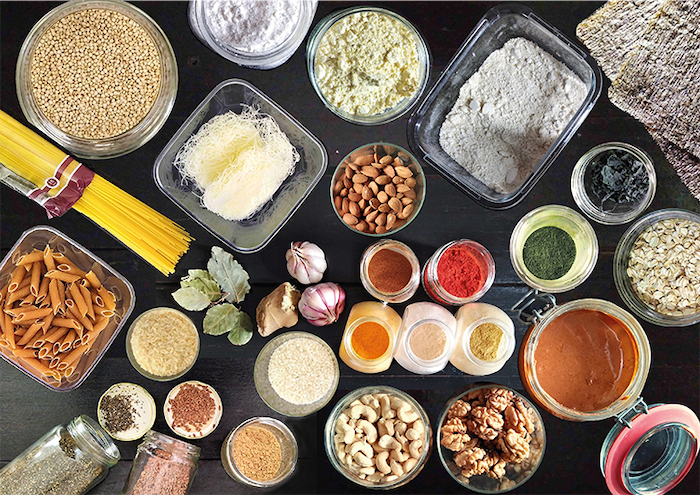
My Vegan Pantry Essentials
Dear readers; embracing a vegan diet properly doesn’t necessarily demand unicorn eyelashes kind of ingredients nor exotic exported produce from a galaxy far far away. You can make it happen with divers boring local basic food.
-
- Vitamin B12 and vitamin D3
- Oat
- Flax and Chia seeds
- Rice, quinoa, noodles, pasta and spaghetti
- Walnuts, almond peanuts and cashews
- Sprouted chickpeas and lentils, canned beans
- Tofu (either homemade or store bought)
- Spices, ginger, garlic and bay leaf
- Seaweed: wakame and nori sheet
- Flours: rice flour, chickpea flour
- Condiments: tomato paste, mustard, vinegar (cider, white and balsamic) and gherkins
- Coconut milk and soy milk (homemade)
- Veggies
- Fruits
1- Vitamin B12 and D3.
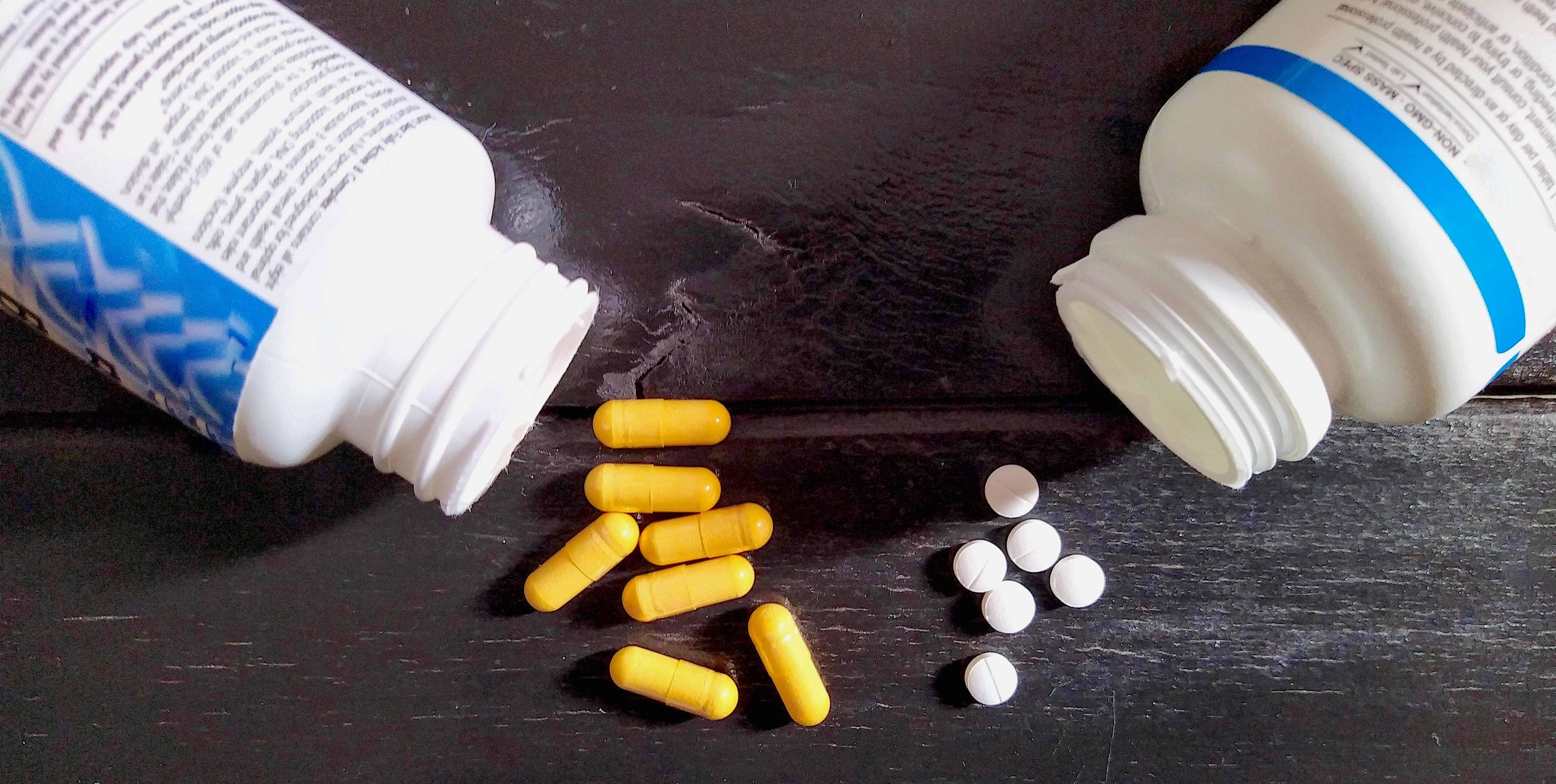 From left to right: Vitamin B complex supplements, vitamin D3 supplements.
From left to right: Vitamin B complex supplements, vitamin D3 supplements.Vitamin B12 supplements is mandatory on a vegan diet, hence me listing it here with the other pantry essentiels. I consume it 3 times a week with the vitamin D3 as well. During sunny season tough, I opt for natural vitamin D production by daily exposing my skin to natural UV light for 20 to 30 min (outside peak hours 10 am – 4pm).
2- Oat.
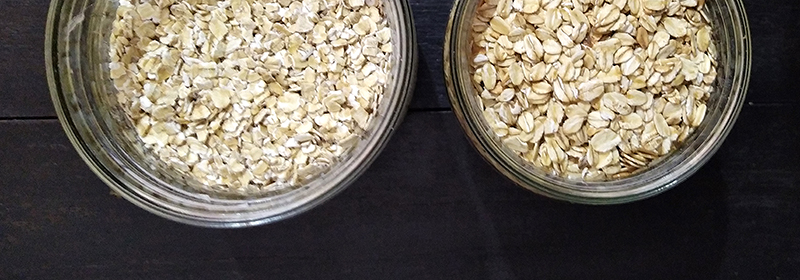 Oat flakes, rolled oat.
Oat flakes, rolled oat.Oat is my everyday breakfast. My to go to ingredient for baking. Oat is that reliable family member that you can count on even if you haven’t seen each others for years. Flakes and rolled are both staples in my vegan kitchen along with oat flour (I blend a good amount into flour consistency and store it in an air tight container). Known for its high fibre content oat is also rich in potassium, manganese, phosphorus, magnesium, zinc and iron. I love how versatile and adaptable oat is ! From the morning chocolaty breakfast oatmeal, to a savoury stew with carrots, onion and green beans, to chocolate chunk cookie as a snack, in muffins, ….. The possibilities are endless.
How to store: in a glass air tight container.
Shelf life: 2 years.
3- Flax seeds and chia seeds.
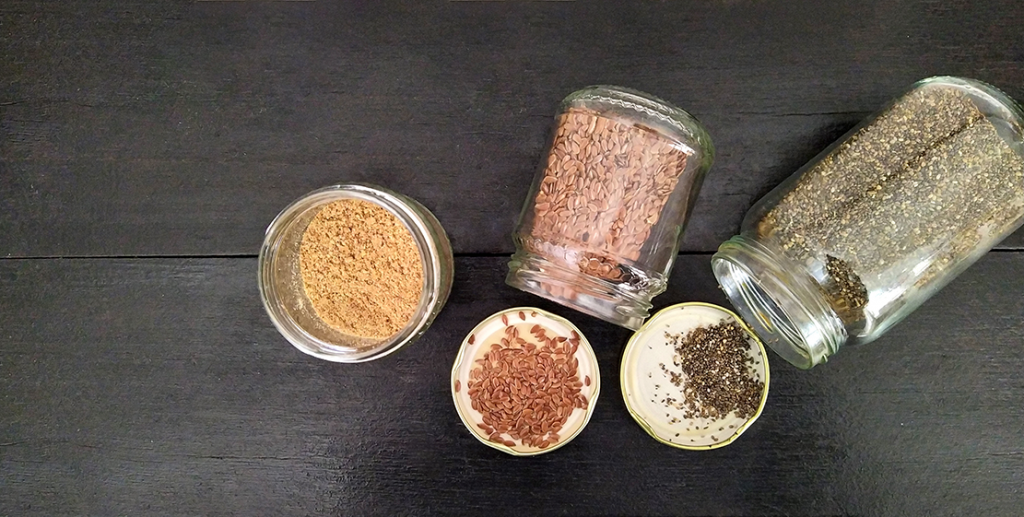 Flax seeds whole and ground, chia seeds.
Flax seeds whole and ground, chia seeds.Now …. where to start and how to end it with these too. They’re both quit similar in terms of nutrients: fatty acids, fibre, zinc, calcium, protein, carbs, manganese, fat, magnesium, …. etc. What matters to me the most is the higher ratio of omega-3 fatty acids to Omega-6 fatty acids.
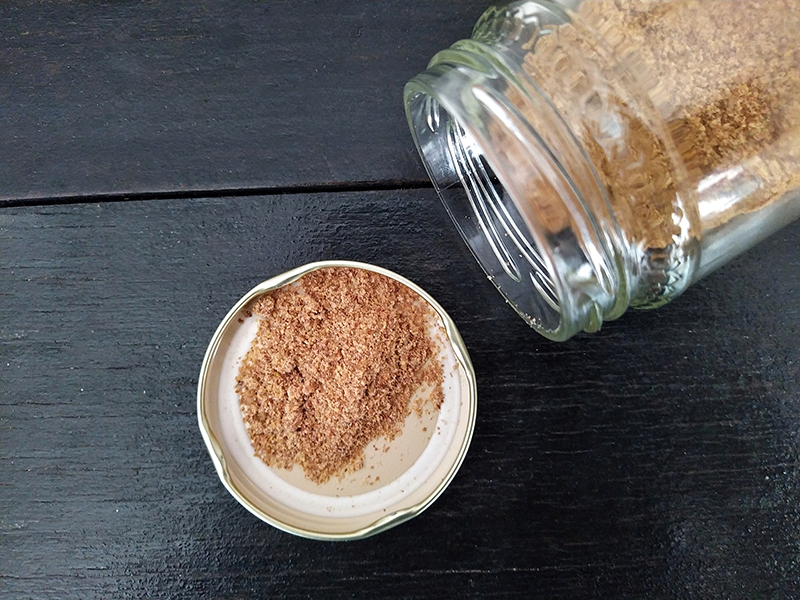
They both go into my morning oatmeal as 1 Tbsp of each. I use them in my baking as well as an egg replacement (they work like a charm). Chia seeds do no need to be ground to be fully absorbed and digested. Unlike their pal here, flax seeds are required to be milled before consumption. It’s time consuming I know ! Especially during these busy mornings. Therefore, every 3 to 4 days I ground a couple of tablespoon of flax seeds and store it in a small glass airtight container. A time saver hack that make sure you don’t skip on the flax seeds valuable nutrients.
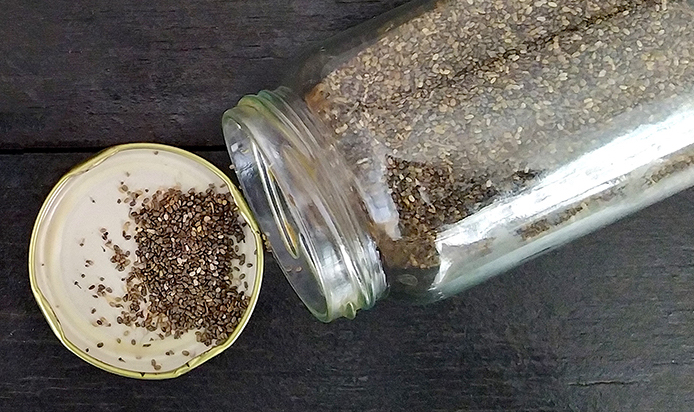
How to store: in a glass containers over the counter during cold weather. In the fridge or freezer during summer time.
Shelf life: whole flax seeds last 1 year in the freezer or fridge. Ground flax seeds only a week.
chia seeds stores up to 1 year and more if stored in the fridge or freezer.
4- Rice, quinoa, noodles, pasta and spaghetti.
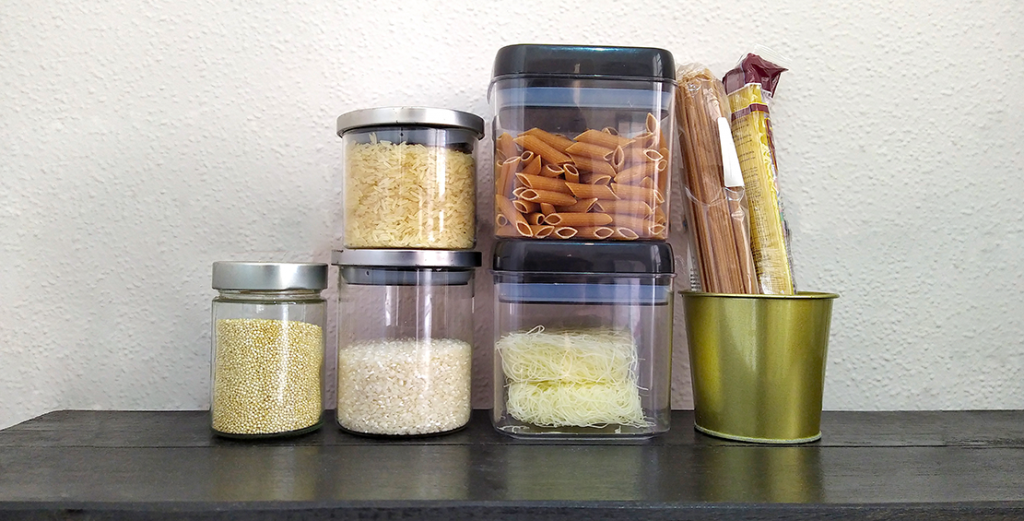 From left to right: quinoa, short grain rice, long grain rice, pasta, noodles, spaghetti.
From left to right: quinoa, short grain rice, long grain rice, pasta, noodles, spaghetti.I grouped these together because they all serve the same purpose in my diet: a base to my meals.
Rice
 Sticky short grain rice, long grain rice.
Sticky short grain rice, long grain rice.Let’s start with rice. Long grain, small grain, basmati rice, jasmin rice, brown, … etc. They are mainly loaded with complex carbohydrates; the body’s main fuel source. You get some minerals and vitamin B complex as well like Thiamin (B1), Niacin (B3), Folate (B9), B6, B5. Besides all of these nutrients, I eat rice because it’s delicious.
The varieties are over whelming. I stick to 2 types of rice: the sticky short grain white rice, and the long grain rice.
The sticky one serves as my sushi rice, Cantonese rice, Mexicain style salad, as a stew and savoury sauces side dish and in risotto. I even enjoy it on it’s own ! Plain sticky white rice is DELICIOUS. Above all, It’s easy and quick to cook. Perfect for a last minutes fix.
The long grain rice, in the other hand, is used in my fancier Middle Eastern experimental copycat recipes. Bukhari rice, Persian sweet rice, Kabsa rice as well. They’re all unbelievably delicious fragrant rice, loaded with flavours and spices. A complex multilayered dishes. N-O-T a quick fix. Nether-less, I enjoy the experience as much as the dishes them selves.
In conclusion, stock up on rice.
How to store: in glass containers.
Shelf life: 2 years.
Quinoa
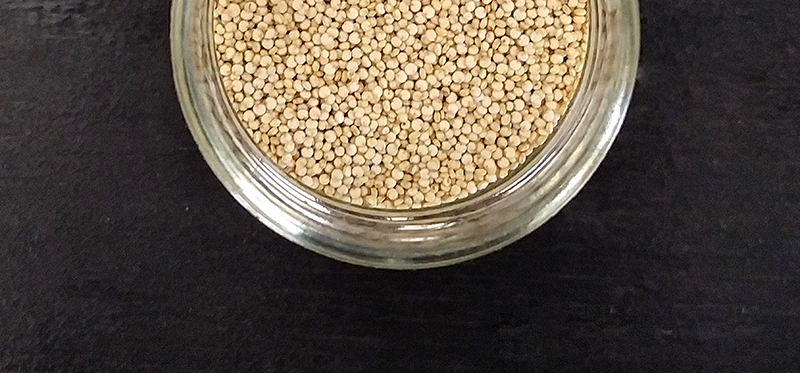 Quinoa.
Quinoa.Although it looks like a grain, cooked and prepared like a cereal grain, quinoa is actually a seed from a plant.
It is gluten free, carbohydrate and a complete protein source (in other term it contains all 9 essentiel amino acids just like tofu !). In addition to its hight content in fibre, quinoa is also an excellent source of antioxidant and minerals such as iron, copper, manganese, phosphorus, zinc, folate and magnesium.
It is mandatory to soak quinoa (from 15 min to overnight) before cooking. Then cook It just like rice. When cooked, it resembles couscous. Furthermore, it stores up to 2 weeks in the fridge ! A precooked stored quinoa is undoubtedly a life saver. I use it as a main dish served with bean stew, as a veggie salad, in a tabbouleh (as a gluten free bulgur substitute. Clever hein !). And in my meatless and vegan patties preparation. I even add it to my miso soup. I’ll say no more than It’s a fantastic staple to have on hand at all time.
How to store: in a glass container.
Shelf life: uncooked quinoa seed will last up 3 to 4 years.
Noodles
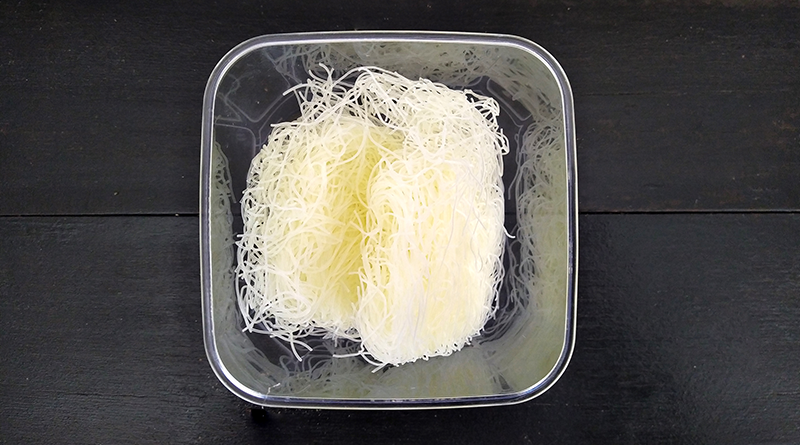 Rice noodles.
Rice noodles.Noodles need no introduction ! I’ll mention though that I only eat rice and mung bean noodles. I always have a large rice noodle package in my pantry and several of the mung bean noodles (they don’t come in a large pack where I live).
Needless to mention how EASY they’re to prepare. Simply submerge the rice or mung beans noodle in boiling water, cover the bowl and they’re ready in like 10 min ! My favourite way to serve them is with sautéed vegetables, Thai peanut sauce and a sprinkle of wakame and sesame seeds. You can eat as a salad or in spring roll as well.
Overall, make noodles a staple in your pantry.
How to store: in their original packaging or glass air thigh container.
Shelf life: If opened up to 1 year. Otherwise it lasts up to 2 years.
Pasta and spaghetti
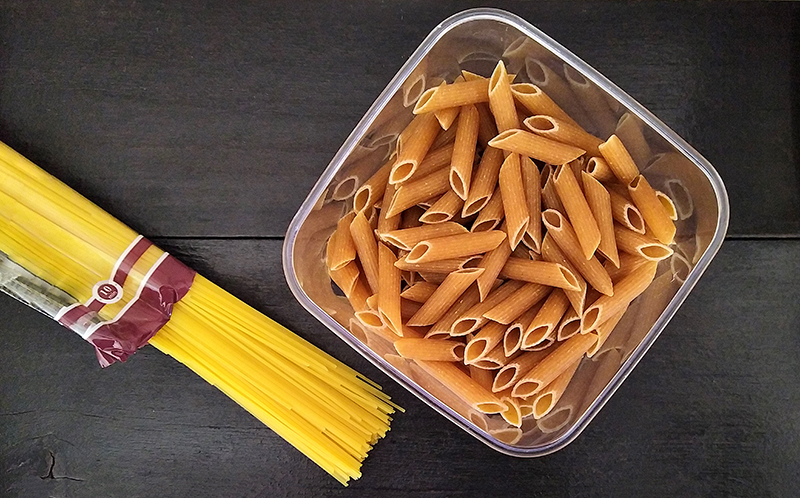 Thin spaghetti, penne.
Thin spaghetti, penne.The typical fresh Italian pasta is made from eggs and flour. The dry one however is eggless ! Yay for vegan pasta lovers.
Technically spaghetti is a type of pasta. But I mentioned it separately for a reason and that reason is I love it more than the other pasta. The thin spaghetti to be more specific. With a slow simmered rich tomato sauce and a generous sprinkle of shredded vegan mozzarella and a touch of finely chopped basil (who else is salivating over this ?).
As for the other type of pasta, I switch between macaroni, penne and fusilli. As a creamy mushroomy dish or I keep it simple by tossing it in a veggie mix or a quick generous salad.
Pasta is clearly a must have in your pantry, vegan or not !
How to store: in their original packaging or glass air thigh container.
Shelf life: If opened up to 1 year. Otherwise it lasts up to 2 years.
5- Walnuts, almonds, peanuts and cashew.
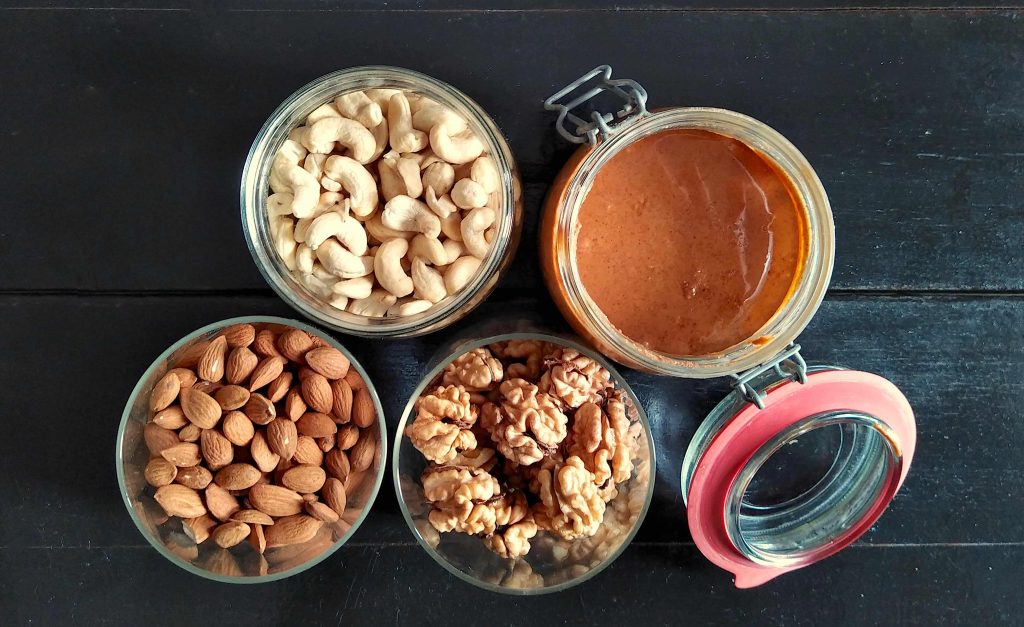 From left to right: whole toasted almonds, whole toasted cashews, whole walnuts, peanut butter.
From left to right: whole toasted almonds, whole toasted cashews, whole walnuts, peanut butter.The nuts category. You obviously not restricted to these three options. But based on my experience, these are the one you’ll be coming back for over and over again. They’re available, affordable, nutritious and will do the job just as right as you expect them to.
let’s start with walnuts. Walnuts are known for their higher contents of omega-3 fatty acids, vitamin B complex and minerals as well. Such as copper, manganese and vitamin E to name a few. How I include walnuts in my every diet?
First I roast them in the oven for a couple of minutes then I store them in a glass air thigh container. I finely choppe 2 or 3 halves roasted walnuts and garnish my everyday breakfast oatmeal. Alternatively, I crush them on top of my salads as well as my bolognese sauce. These are my habitual way to consume walnuts.
Almond are similar to walnuts in terms of nutrients, except almond are way higher in magnesium, riboflavin (B2) and vitamin E. I prep and store almonds the same I store walnuts. In terms of consumption, I mostly snack on almond with fruits, extract a plant based drink out of it or as a butter spread. I don’t get that much creative with almonds.
As for peanuts and cashews, I strictly grind them into a butter consistency due to their higher fat content. The peanut butter goes into my sweet baked goods and Thai peanut sauce for my noodles. And the cashew butter goes into either a creamy sweet dessert (like tiramisu), or a savoury one for pasta white sauce or vegan cheesy sauce.
6- Sprouted chickpeas/ lentils and canned beans.
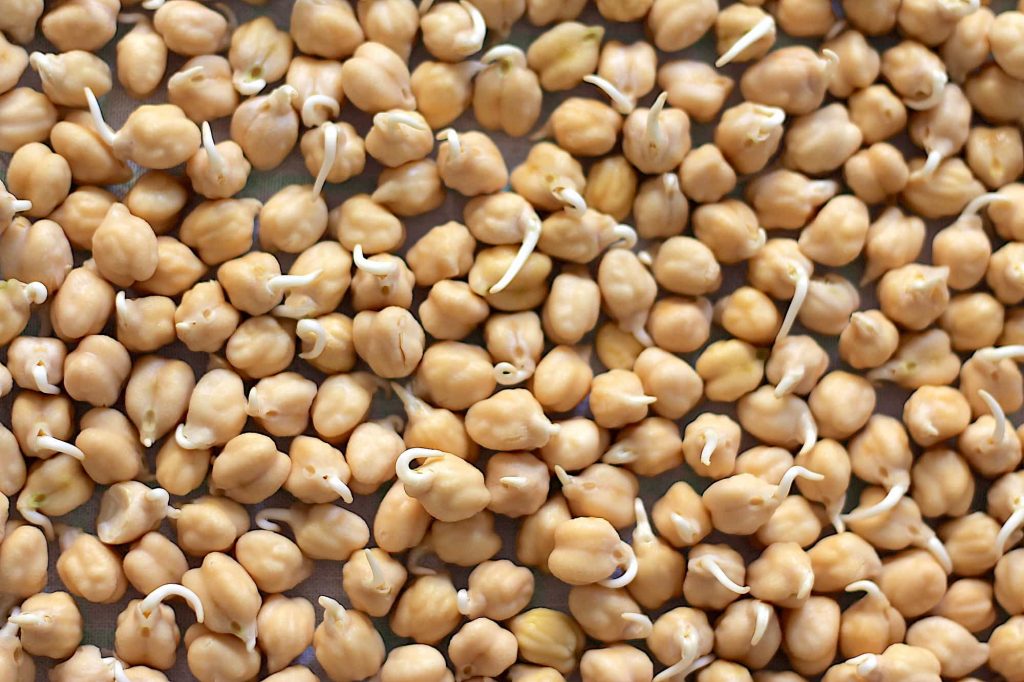 Sprouted chickpeas tray.
Sprouted chickpeas tray.I always make sure I have a variety of canned beans in my pantry such as canned white beans with tomato sauce, black beans or pinto beans to name a few. I keep them for these unexpected busy days where a quick nutritious meal imposes itself and all you have to do is grab one of the canned beans and mash them into a spread over toasted bread and voilà you’ve fed yourself ! But the staple beans, the stars of my legume pantry section are…[drumrolls]… chickpeas and lentils. Sprouted chickpeas and lentils to be more specific. Why sprouted ? Simply because the sprouting process reduces the bloating (no farting !) and enhances the nutritional value. In short sprouted lentils and chickpeas are good for you and simple to sprout. More on how to sprout chickpeas and lentils right here.
7- Tofu (homemade or store-bought)
Store bought tofu lasts for ever. Get a bunch of it (silken and firm) trow them in your pantry and you’ll never run out of meals ides ! Not only tofu is a complete protein (it contains the 9 essentials amino acids the body can not produce) but it’s fortified in calcium and vitamin D. To counter its store bought version, homemade tofu has naturally no vitamin D and TASTES heavenly on its own. Furthermore, tofu is with jammed pack with protein along with other nutriments.
How I habitually use it? Although I’ve tried tofu in all it’s possible cooking method and techniques and I’ve enjoyed all of the delicious recipes, I’ve found myself going back to the simplest basic way: tofu spread. Using a fork smash the tofu, add herbs and olives, spread on toast, bread or tortilla, eat it. That’s it !.
Furthermore on the subject of tofu, the silken version goes instantly in my chocolat mousse dessert: melt dark chocolate, mix with tofu, leave in fridge then voilà ! Chocolate mousse.
8- Spices, garlic, ginger and bay leaf.
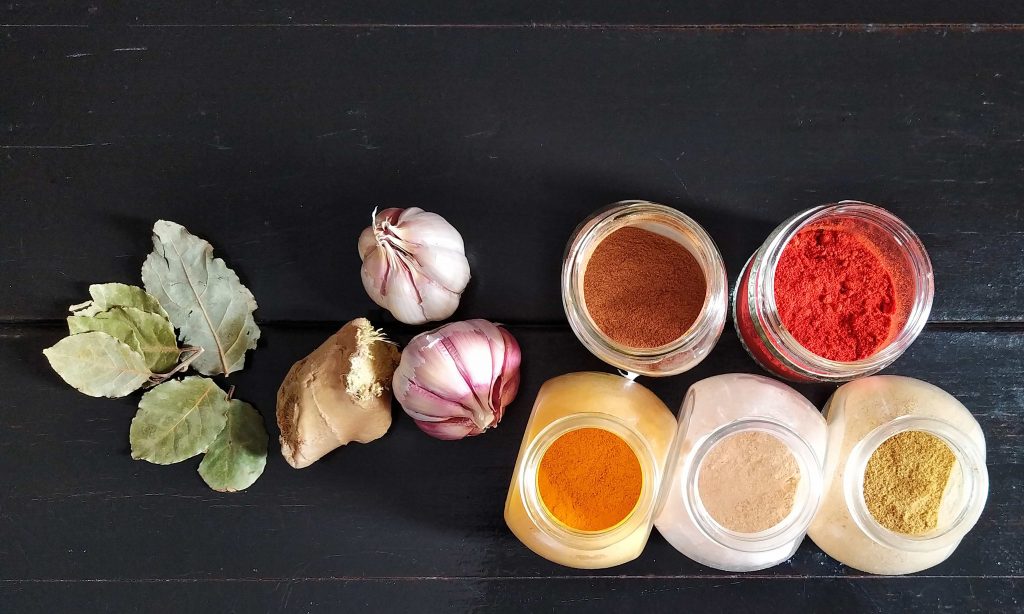 From left to right: bay leaf, fresh ginger, garlic, ground turmeric, ground cinnamon, ground ginger, sweet smocked paprika, ground cumin.
From left to right: bay leaf, fresh ginger, garlic, ground turmeric, ground cinnamon, ground ginger, sweet smocked paprika, ground cumin.Spices are mostly mentioned for flavour and rarely for their nutrition value. Spices are rich in minerals and vitamins as well since they are plants in the first place. Fresh ginger and garlic along with bay leaf are staples in every vegan kitchen I feel. Needless to justify why. Spices likewise, but I’ll mention the ones I don’t part with:
-
- Turmeric: anti-inflammatory, rich in vitamin E and a wild range of minerals.
-
- How I use it: in tofu scramble, Moroccan inspired dishes and any sauce requiring a yellowish colour.
-
- Turmeric: anti-inflammatory, rich in vitamin E and a wild range of minerals.
-
- Ginger ground: is similar to turmeric in terms of minerals and vitamins but way inferior in quantity.
-
- How I use it: in tofu scramble, Moroccan inspired dishes and curry recipes.
-
- Ginger ground: is similar to turmeric in terms of minerals and vitamins but way inferior in quantity.
-
- Cumin: is mostly rich in Calcium and Iron.
-
- How I use it: in lentil stew, hummus, Moroccan split bean purée (aka Bissara), potato salad and curry recipes.
-
- Cumin: is mostly rich in Calcium and Iron.
-
- Smoked sweet paprika: I mainly use it for its sweet smoky tastes.
-
- How I use it: in roast, baked potato wedges and smoked vegan cheesy sauce.
-
- Smoked sweet paprika: I mainly use it for its sweet smoky tastes.
-
- Cardamom and the gangs: (cloves, star anis, dried lemon).
-
- How I use it: to flavour rice, quinoa and in my vegan shawarma spice mix.
-
- Cardamom and the gangs: (cloves, star anis, dried lemon).
9- Seaweeds: Nori and Wakame.
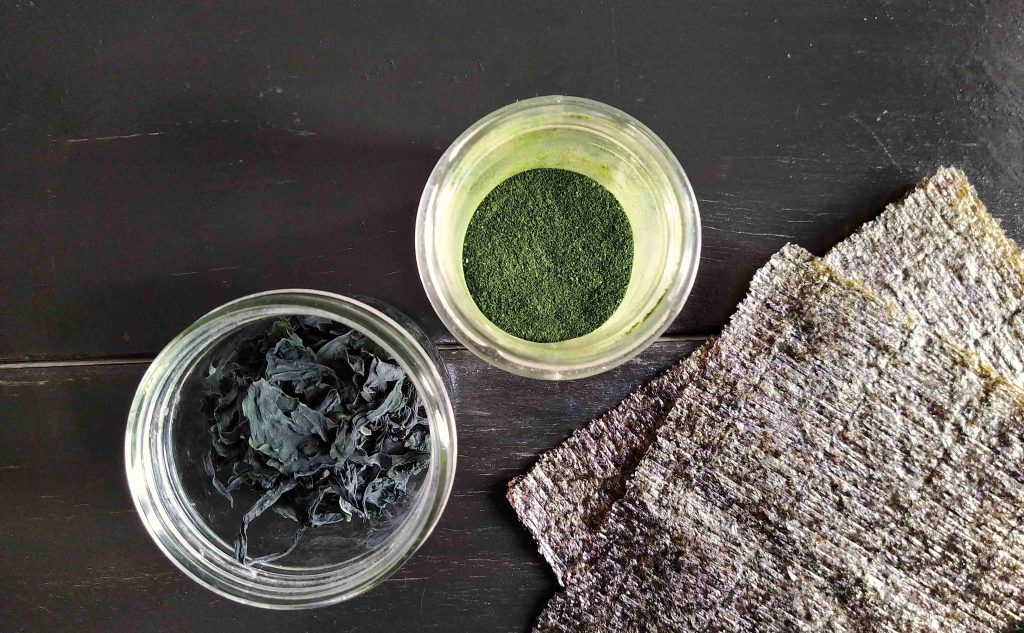 From left to right: whole dried Wakame, ground dried Wakame and Nori sheet.
From left to right: whole dried Wakame, ground dried Wakame and Nori sheet.Seaweeds are rich in minerals (especially calcium). But the main benefit I consume seaweeds for is: iodine. 1 Tbsp 2 to 3 times a week is more than enough as too much iodine can miss up your thyroid function.
Nori sheets are obviously used in sushi rolls. Wakame in the other hand, plays a double role in my cooking. They find themselves in my miso soup and in my vegan tuna mixture (for sandwiches or sushi rolls) Basically, any cookery requiring a fishy sea like flavour; look no more; go toute-de-suite to wakame.
10- Flours: rice flour and chickpea flour.
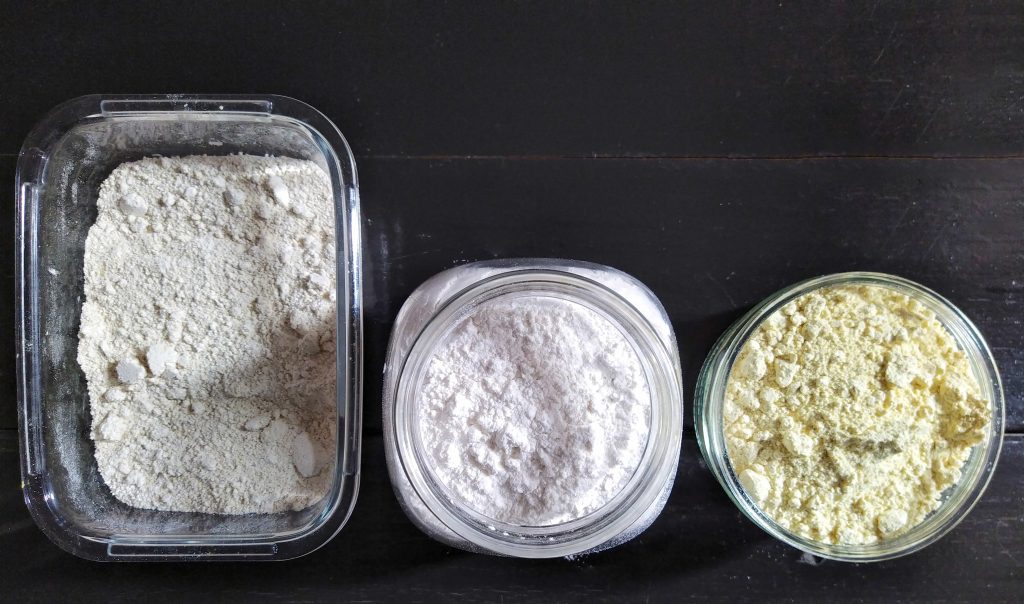 From left to right: oat flour, rice flour, chickpea flour.
From left to right: oat flour, rice flour, chickpea flour.It’s all I ever need really. Along with oat flour as mentioned before. Rice flour is strictly used in my gluten free baking along with oat flour. Conversely, chickpea flour is a whole meal on its own. Mix it up with spices and water then bake it and voilà ! You’ve got yourself a flavourful nutritious vegan omelette ! Alternatively, use the same mixture to deep fry mushrooms or fried California rolls into an unbelievable crunchy treat.
11- Condiments: fake honey, tomato paste, mustard and vinegars.
Fake honey (which is basically sugar) or any liquid sweetener is a must’ve in your pantry for obvious reasons. We all need a little sugar love now and then.
Tomato paste is handy for a quick last minute tomato sauce for pizza or pasta. You cook it with water, garlic, salt, olive oil and bay leaf and BAM: flavourful tomato sauce.
One mustard jar goes a long way ! I mostly use it in vinaigrette, vegan mayo and sandwiches. I always have a jar of mustard at home.
Now vinegars my friends have been mentioned in plural for a reason: I keep more than one type of vinegar in my vegan kitchen and each one of them serves a purpose. Cider vinegar: in homemade vegan mayo and other cheesy flavoured preparation. White vinegar: is used for homemade tofu and swift salad dressing. And balsamic vinegar: in my bolognese sauce and in salads.
12- Canned coconut milk and soy milk.
When it comes to soy milk, I opt for home-made. Tastes better, you’re in control of the consistency and the amount of the soy beans – therefor, you insure an effective quantity of nutrients- and most importantly sugar free. Having soy milk at a vegan hand is like a wand to magician. Fancy a dessert ? Soy milk. Creamy savoury sauce anyone? Soy milk. Craving a luscious thick vegan mayo? Soy milk. You get the gist. In addition, soy milk is a complete protein since it contains the 9 essentials amino acids.
Canned coconut milk in the other hand, is fully fat. Hence it’s ability to solidify in low temperature which makes it perfect for dessert like mousses and ganaches for example. Great add to curry as well. Keep at least 2 cans of coconut milk in the fridge at all time. That’s way they’re ready whenever you need coconut cream.
13- Vegetables.
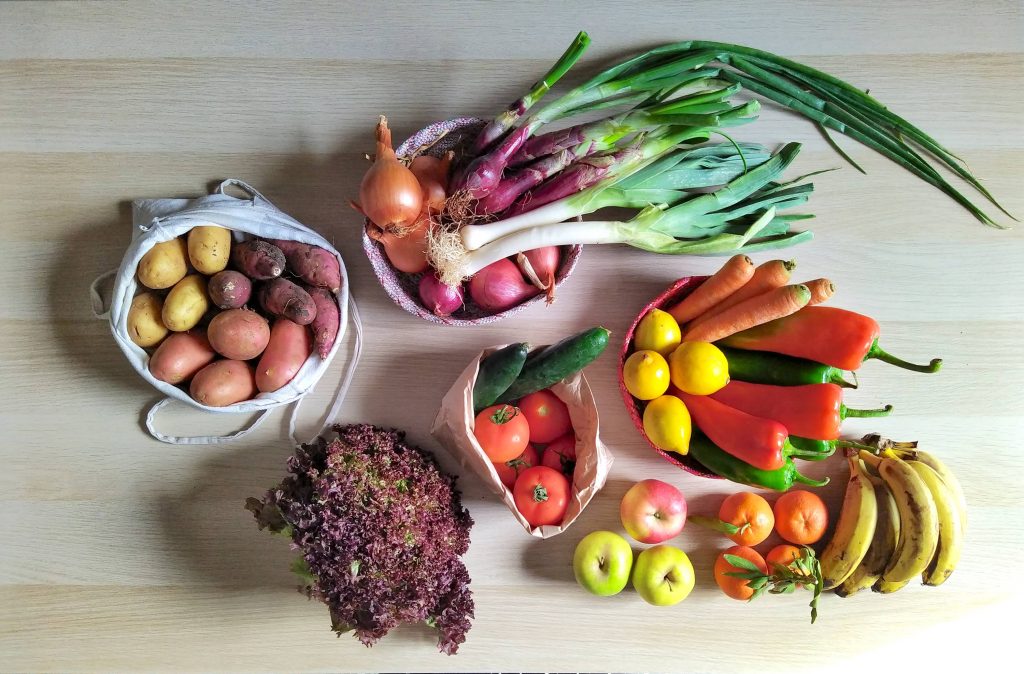 My vegan pantry essentials: onions (red, yellow, spring, …), potatoes (sweet, yellow, red), lettuce, tomatoes, cucumbers, red and green peppers.
My vegan pantry essentials: onions (red, yellow, spring, …), potatoes (sweet, yellow, red), lettuce, tomatoes, cucumbers, red and green peppers.An abundance of choices ! I always go for local produces first then imported veggies second. Without further ado, here’s my pick of must have vegetables in your vegan kitchen:
-
- Onions: red, yellow, green, spring.
- Tomato: cherry and regular.
- Potatoes: sweet potato and russet potato (the common).
- Cucumber.
- lettuce: I LOVE LETTUCE ! There I said it ! Dipped in a sour French vinaigrette sauce yum yum. Any kind of lettuce; red leaf, iceberg, … whatever’s available at the market.
- Red and green peppers: the long sweet types (they’re locally produced) not the bell ones.
- Carrots.
Do not get me wrong; those are not the only vegetables I consume. Rather the ones I find myself going back to over and over again. Because their versatile, wholesome on their own, flavourful, available and affordable anywhere you go !
14- Fruits.
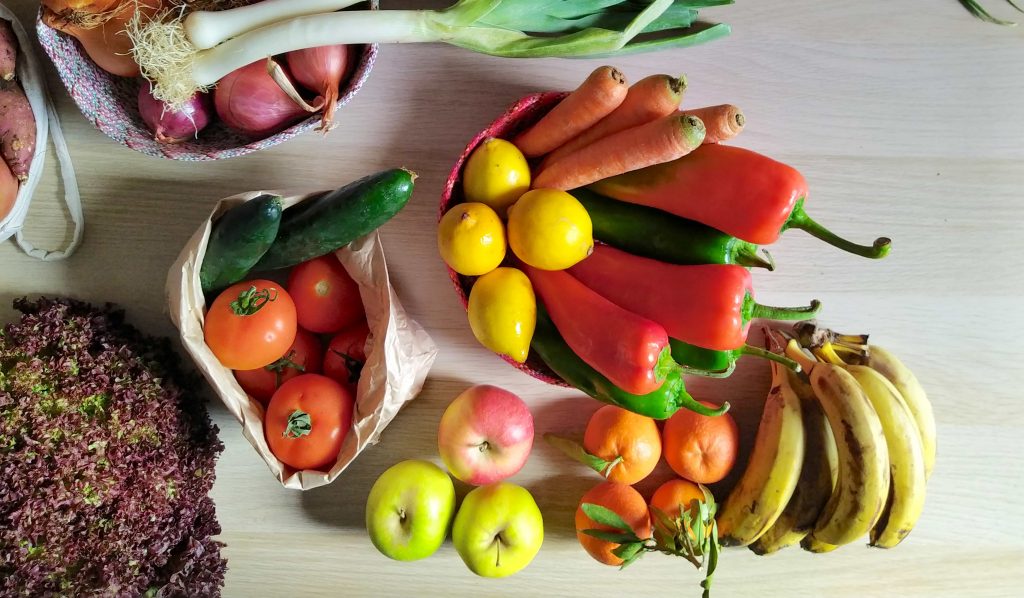
The same goes with fruit. What I always have on hand:
-
- Banana: either on their own as a snack, my pancakes or in my baked good; they never let me down. Packed with vitamin B complex and vitamins such as manganese, magnesium and copper to name a few; bananas are a must have in a vegan diet.
- Apple: crunchy juicy and tasty. Apples go into my dressing, snack, salads and as a natural sweetener in baked good. Undoubtedly, another must have.
- Lemon: needless to explain.
- Oranges or mandarins: same as lemon, needless to justify.
In short; dear readers; embracing a vegan diet properly doesn’t necessarily demand unicorn eyelashes kind of ingredients nor exotic exported produce from a galaxy far far away. You can make it happen with divers boring local basic food.

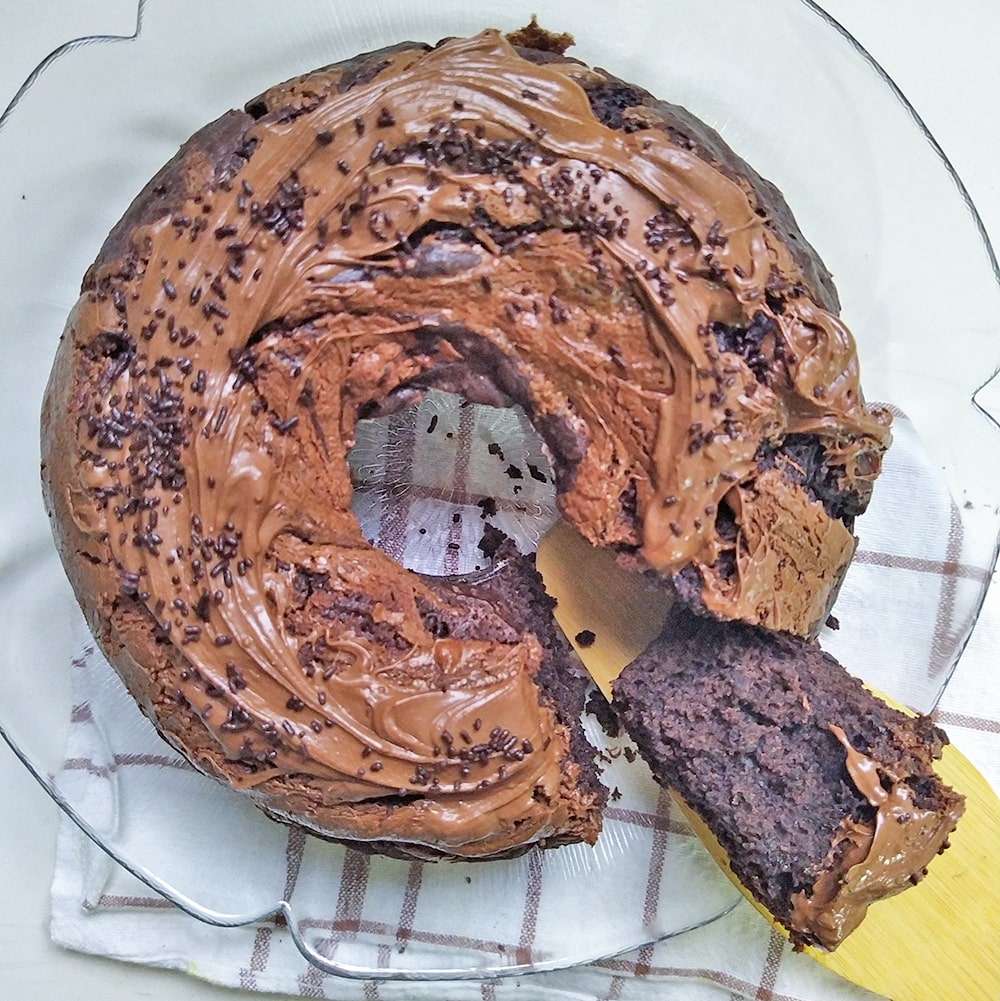
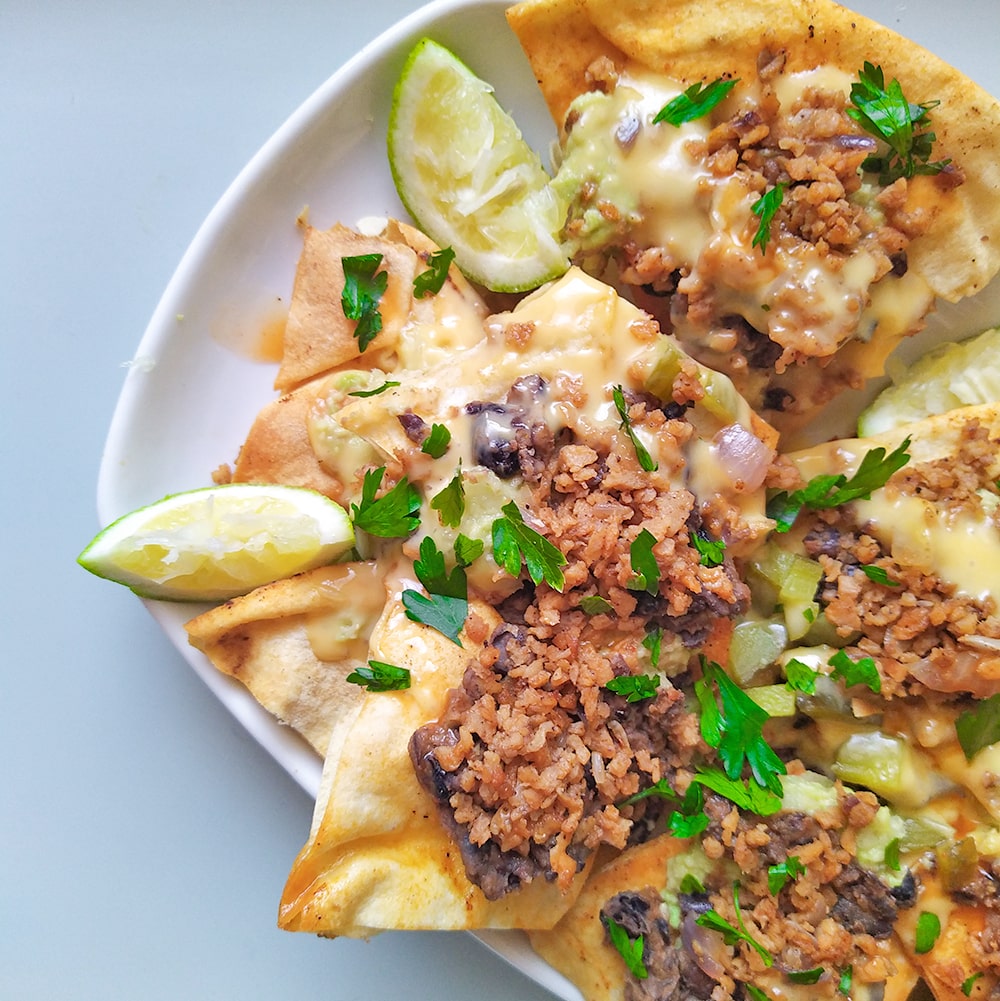

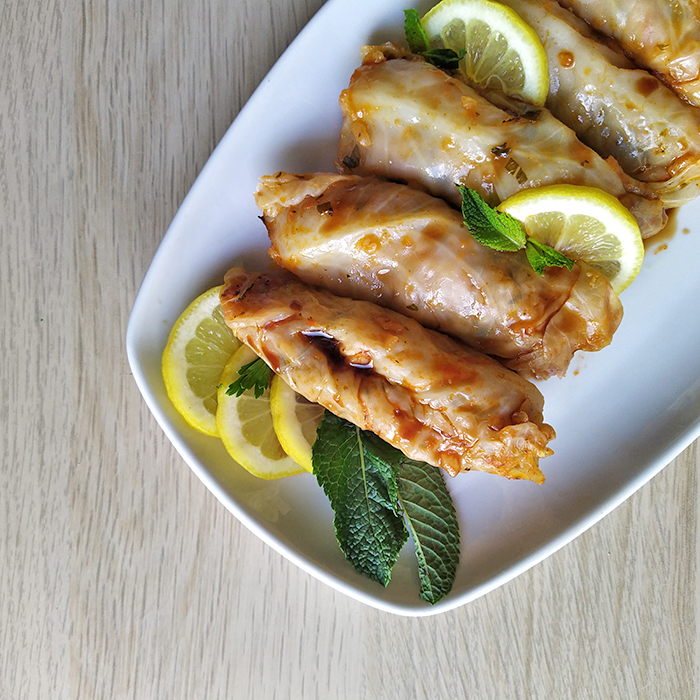
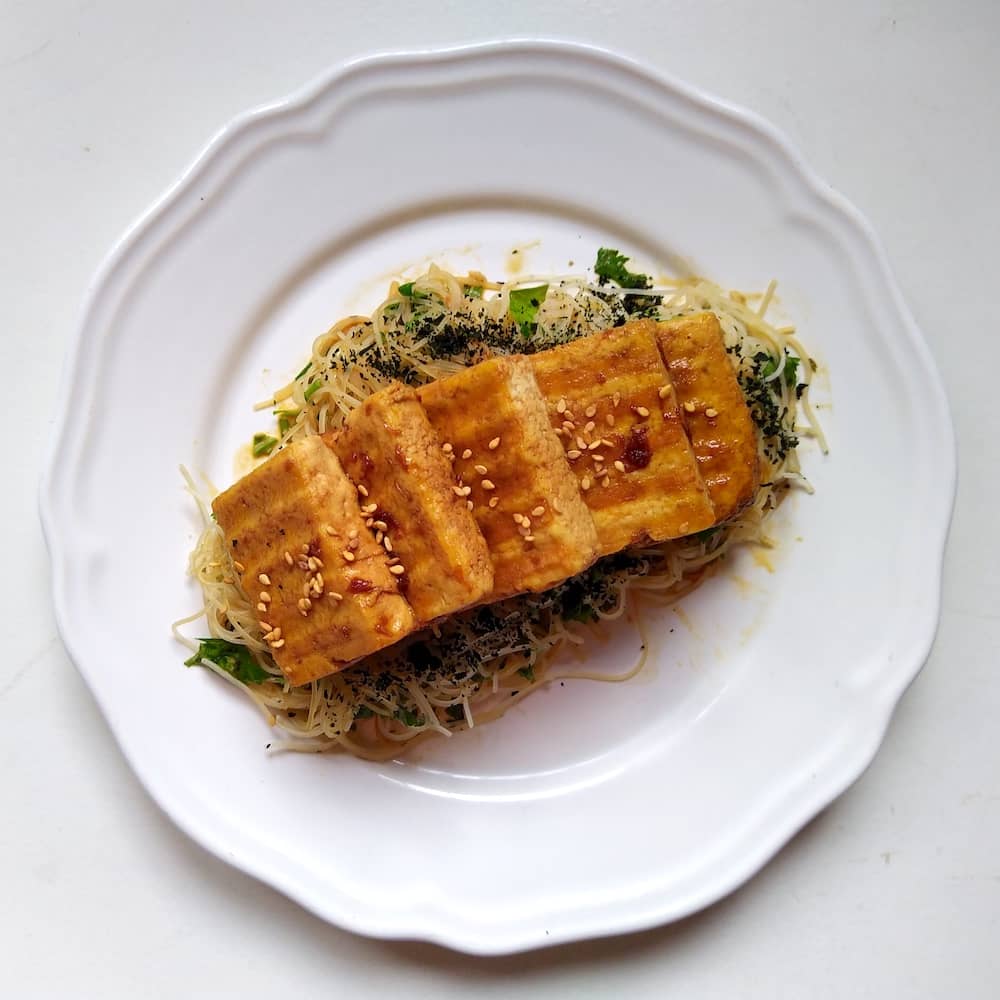
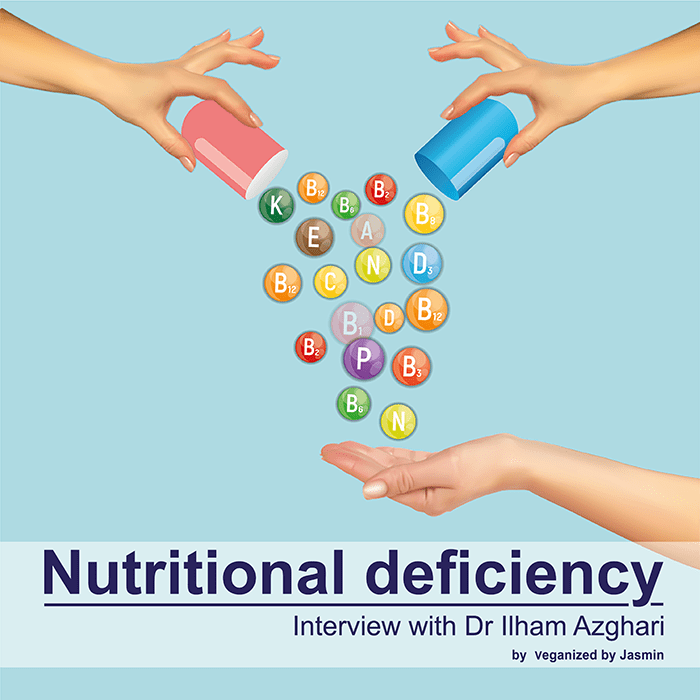
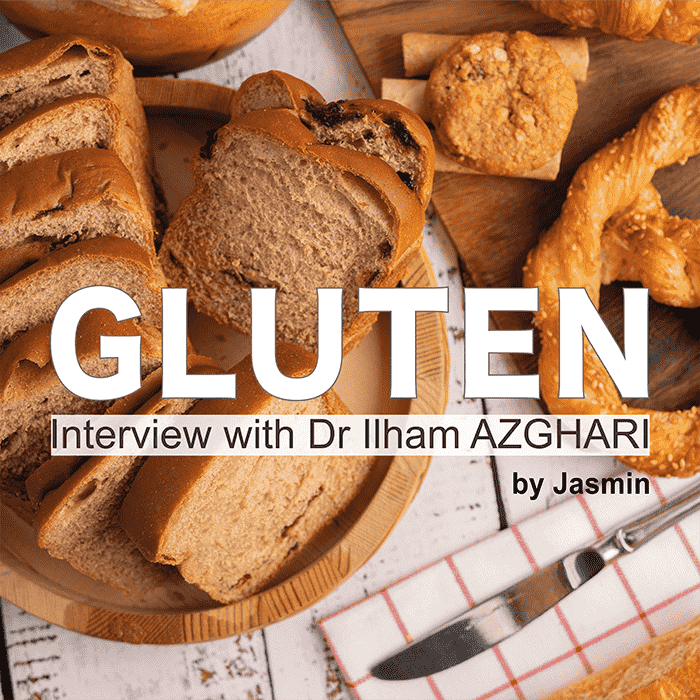
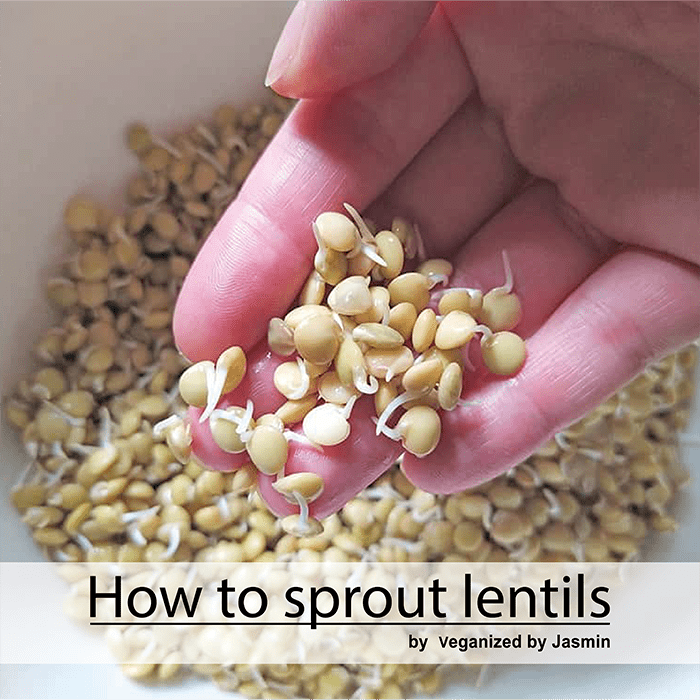
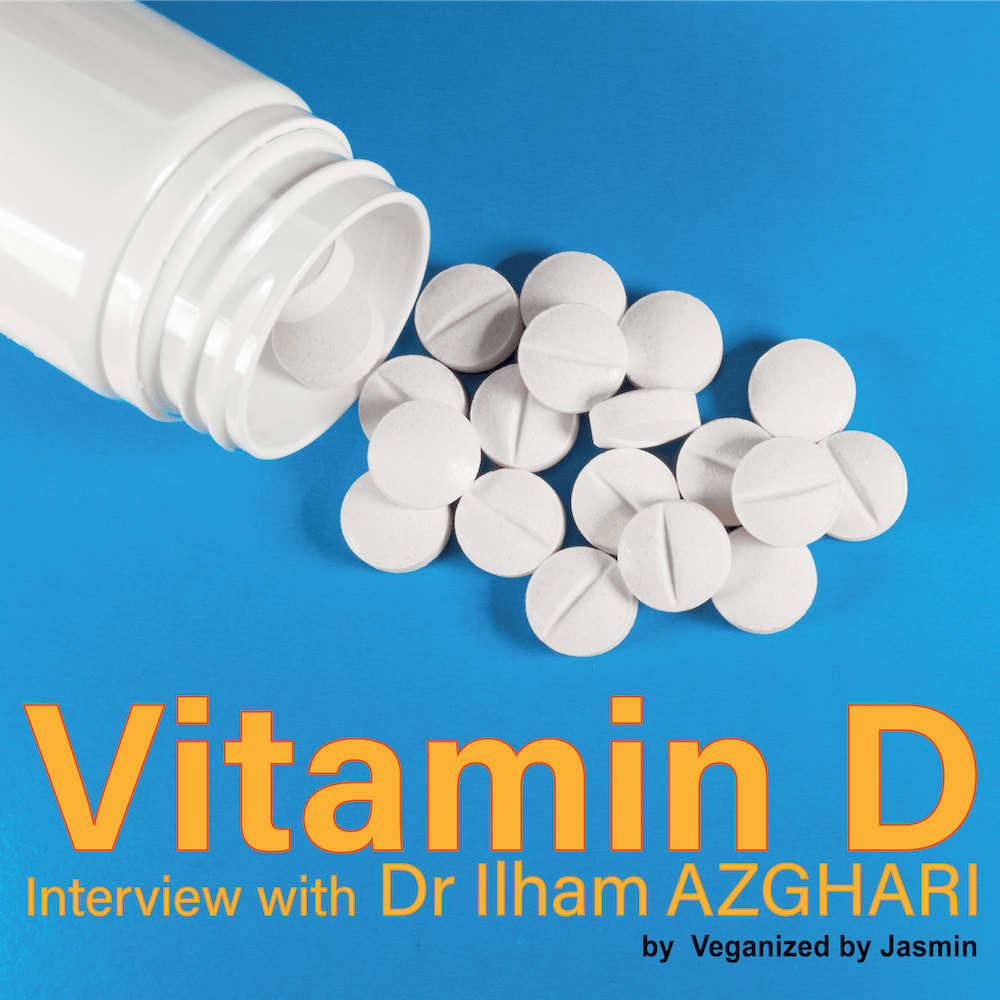
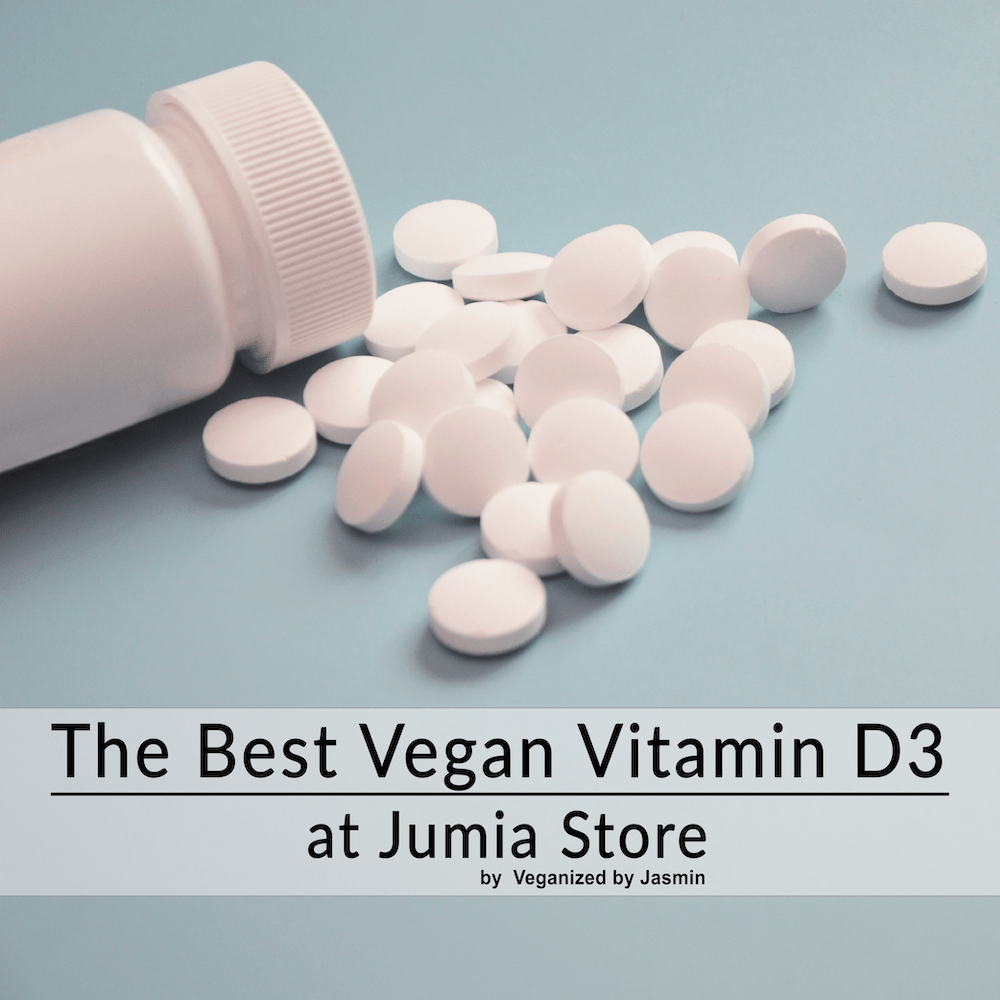
Thank you for this article, very clear and simple.
I’m glad you like the article =)